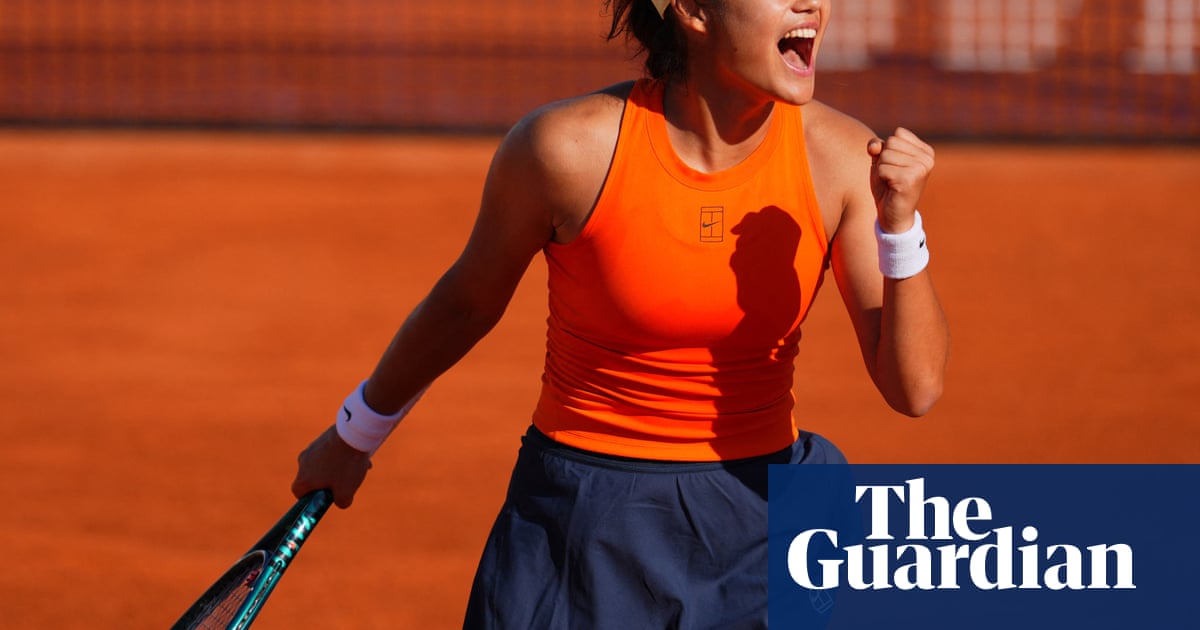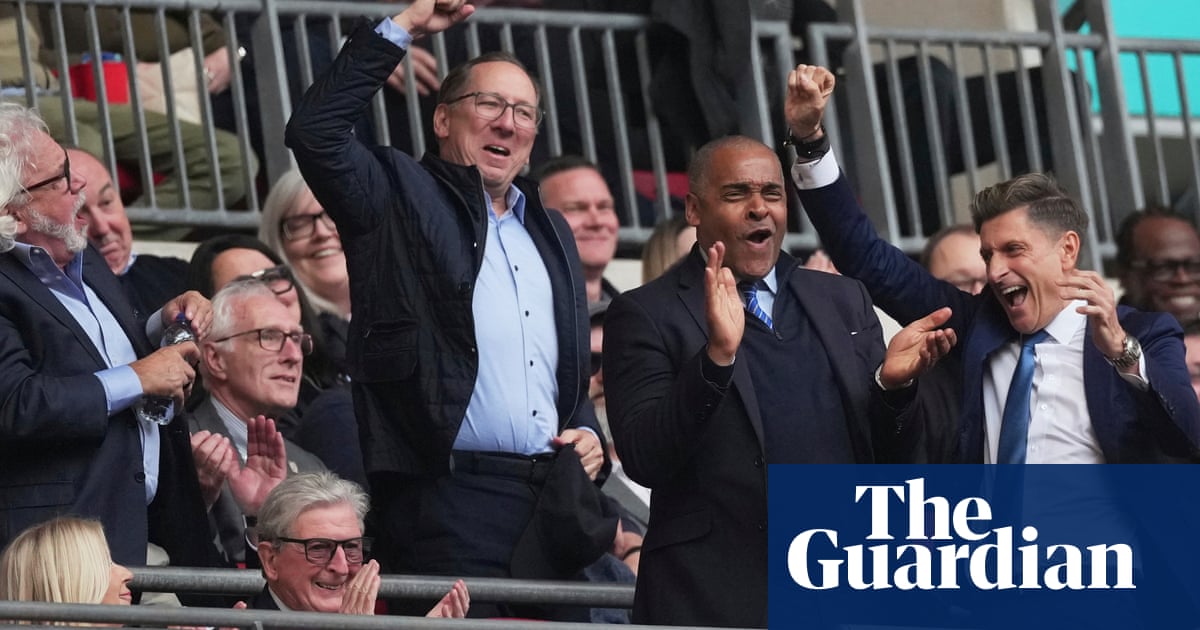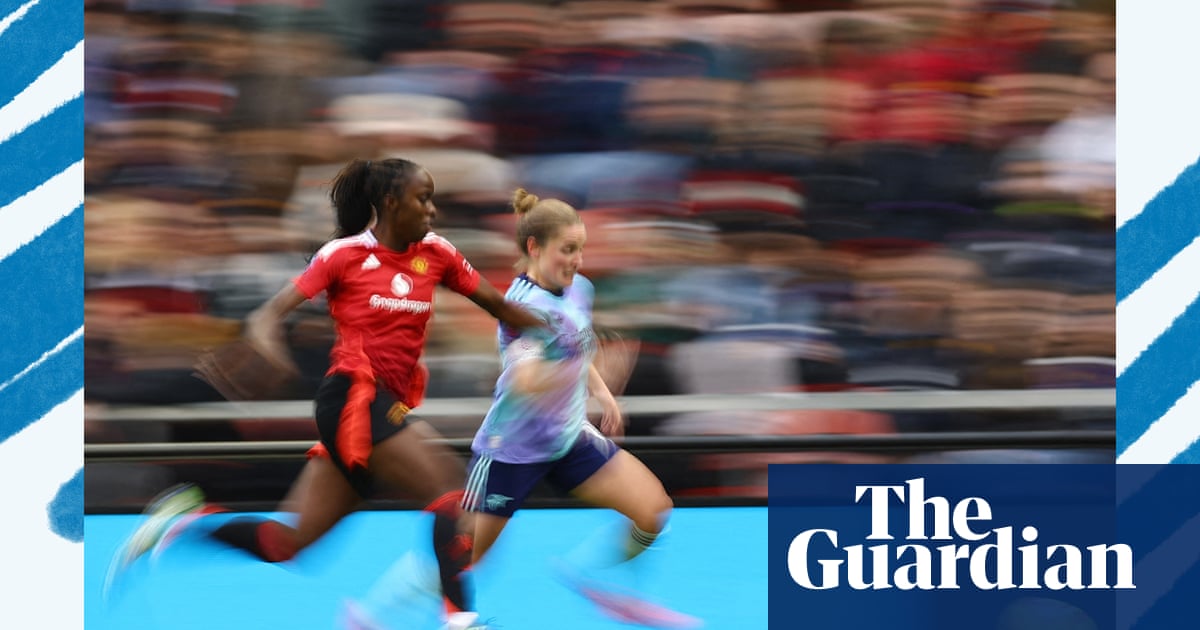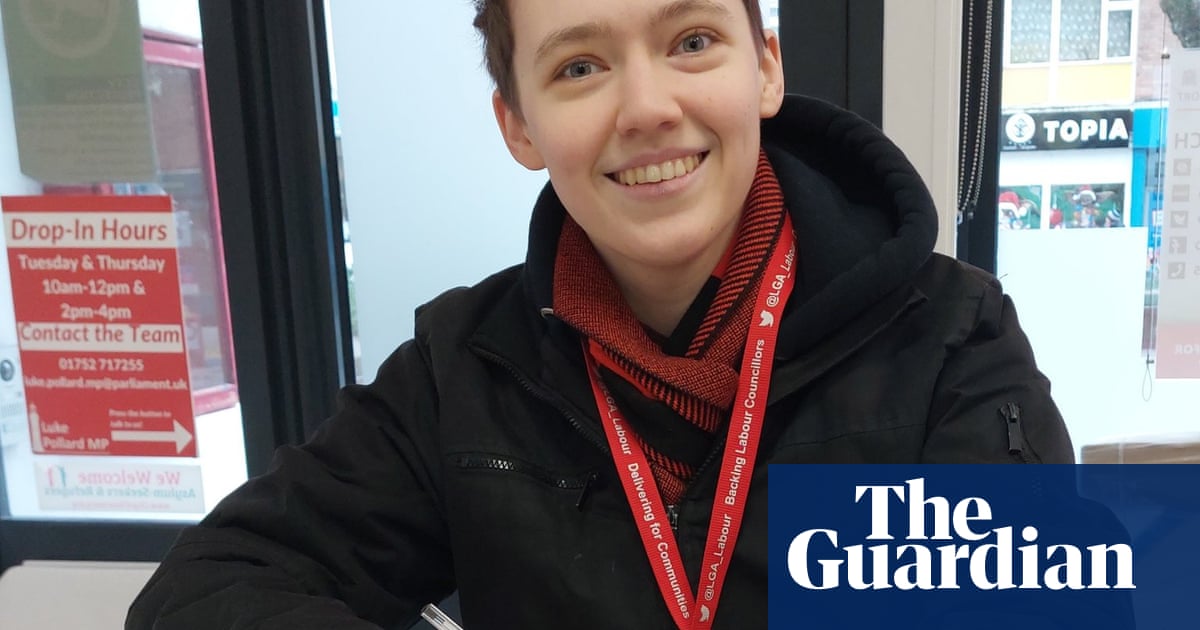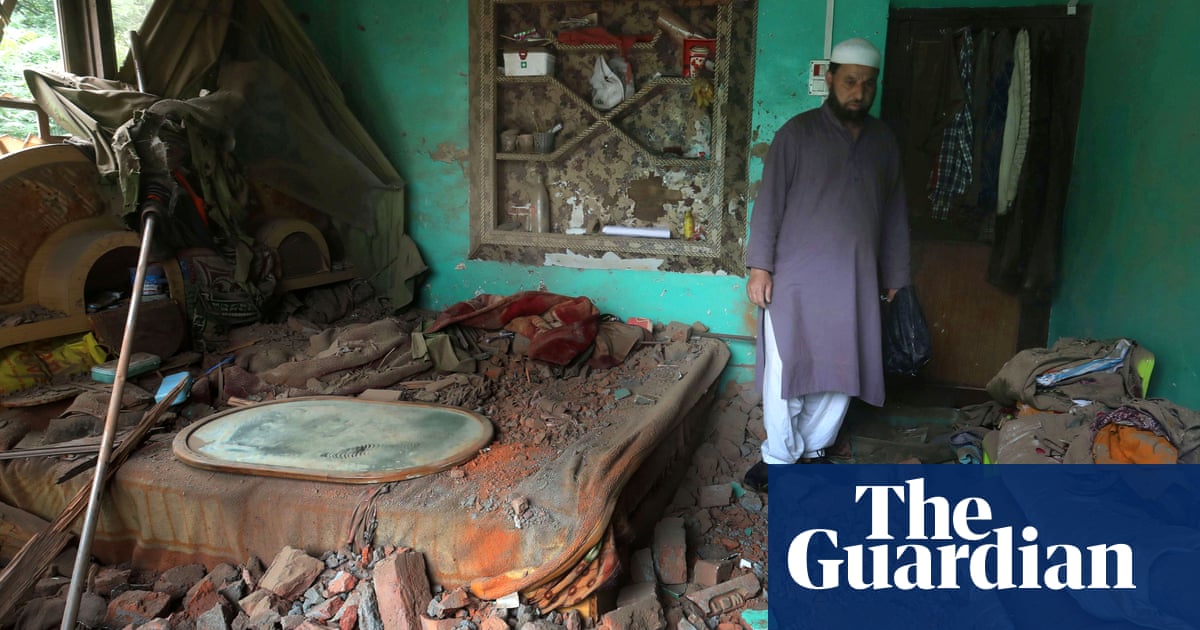Before she was getting DMs from Dua Lipa and minting K-pop hits, and long before yesterday’s surprise release of her sumptuous fourth album, Erika de Casier was a nervous student in her 20s debating what to wear on her first day.
It was 2019, her debut album Essentials had come out that year and received critical acclaim. But at Copenhagen’s Rhythmic Music Conservatory (RMC), that was by the by. “In Denmark, it’s incorporated in our way of being: everybody is so humble,” says the Portuguese musician. “It wasn’t like I went to school and people were like …” She makes an exaggerated starstruck face. “That would be crazy. It was just, ‘Oh, congrats. I heard the new album. Sounds great.’”
She wasn’t especially confident about making friends, either. “I was a little afraid that I would become the quiet, weird girl in the corner.”

Her shyness evaporated the moment her class began sharing music, discussing the songs they had made in peer-review sessions known as “Kua”, short for kunstnerisk udviklingsarbejde – artistic development. At her graduation concert two years later, De Casier performed as a proper pop star would, playing five new songs to her adoring friends and changing her outfit for each one.
“I was entertained all the way through,” says fellow musician Molina, making her friend blush with gratitude as we sit in their shared studio in the north of the Danish capital.
De Casier and Molina, from Chile, are two of many noteworthy young musicians to emerge from the RMC in recent years: the school has produced so many brilliant, predominantly female stars, playing a very particular kind of emotionally rich, leftfield electronic pop, that it’s become an engine room for some of Europe’s most exciting music. Among the class of 2020 alone are Henriette Motzfeldt, half of Norwegian two-piece Smerz, and Scotland-born, Denmark-raised Clarissa Connelly, who released a stunning album on Warp last year. The year before them produced the Danes Astrid Sonne and ML Buch, whose own recent LPs became instant classics, much adored by experimental music fans. Denmark’s Fine Glindvad graduated from a master’s course in 2023 and released Rocky Top Ballads, her gorgeous solo debut, last year.
These artists reference everything from trap to trance to traditional Danish nursery rhymes. They share some stylistic leanings – a predilection for lower-case song titles and record sleeves adorned with blurry photographs and zoomed-in portraits – but there’s also something less tangible binding them together: melodies like lullabies from some half-remembered dream that stick in your head without shouting for attention.
A recent article in Dazed celebrated an “undergound Danish dream-pop scene”, likening the artists’ off-kilter music to the floaty, often unintelligible balladry of Mazzy Star and Cocteau Twins. And Spotify recently published Cph+, a playlist featuring a host of burgeoning RMC talent, numerous other Copenhagen artists and, curiously, non-Danish acts such as Oklou (France), Milan W (Belgium) and Chanel Beads (US), suggesting the emergence of a scene and style unbound by geography. Is this a new genre? “It’s a little bit too narrow,” Sonne says. “I feel like that’s what makes it so special: you can kind of see a thread, but we also make quite different music and we come from different musical backgrounds, and that’s being channelled through the music.”
In the verdant courtyard in the middle of the RMC campus, Connelly says: “I think we’re all pretty different. But maybe we’re not. Maybe it is a genre and maybe in 20 years we can see it more clearly.”
The RMC is located in Holmen, north of Copenhagen’s picturesque Nyhavn district and just across the water from the freetown of Christiania. Henrik Sveidahl, rektor (boss) of the school since 2005, gives me a tour through the canteen, the many studios and practice rooms, a grand performance hall and the “aquarium”, a lovely glass hall bordered by water where students sometimes throw parties.
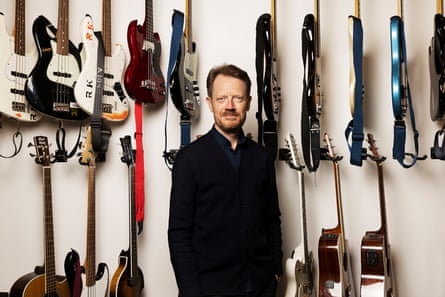
When the weather is right, students swim in the harbour, although it can be risky if the mercury levels get too high, kicked up from the shipwrecks on the seafloor: Holmen was a naval base from 1690 to 1993. De Casier says her favourite lesson at the RMC involved walking around the school grounds with headphones and hypersensitive mics, dropping pebbles into the water and listening intently as they cascaded into the deep.
The RMC opened as a jazz school in 1986, but its recent crop of talent owes a lot to the creation of the composition course in 2009 and the introduction of Kua classes. Sveidahl recalls thinking: “To meet the obligation of our name – rhythmic music – we should rethink it all.” They overhauled the application process, removing music theory as a prerequisite and replacing it with what Sveidhal calls “radical diversity”.
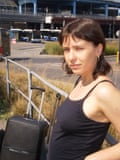
“Rhythmic music is an umbrella term covering all kinds of expression,” he says, “basically deriving from the cultural meeting between European and African music culture.” To his colleague, Anders Pagels Jensen, rhythmic music is essentially popular music, “anything from Ella Fitzgerald to Scott Walker to Abba to Lydia Lunch to Charli xcx to Ryoji Ikeda and so forth”. Denmark’s jazz community was outraged at the change. “We were on the front page of national papers,” Sveidahl adds. “It was a paradigm shift.”
Jensen’s definition may be broad, but it’s underscored by painstaking attention to listening. Connelly describes Jensen – also a successful producer and musician in his own right – as “the best teacher in the world”.
“His knowledge of music is insane,” she says. “He can remember a song I played many years ago and play the chords on the piano, in the right key. He’s so good at understanding music technically, but also emotionally, and it’s very moving how he can relate to so many different students’ work.”
Everyone I meet is effusive about his classes. It seems mutual: Jensen proudly sends me a playlist of 77 singers, guitarists, pianists, producers, multi-instrumentalists and the odd rapper who have studied composition with him. Another key sometime-teacher is Nis Bysted, boss of local record label Escho, who has released albums by Sonne, Smerz, Fine and Molina.
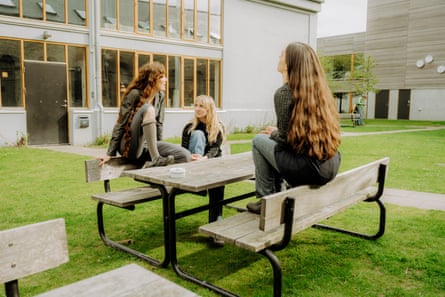
With 200 places available at the school each year (and only eight on the undergraduate composition course), “only the very talented” gain a place, its website explains. It’s free to attend for anyone in the EU – funded by high Danish tax rates – and students can get a small allowance from the government to cover their cost of living. A redirection of funds from Denmark’s coalition government has tightened the purse strings at the RMC in recent years, but everyone here remains resolutely positive about the school’s future.
In a bathroom, I find the words “DEATH IS CERTAIN LIFE IS NOT” daubed on a wall behind a toilet. And in a studio room tucked behind one of the RMC’s impressive concert halls, Sveidhal and I stumble on a student fine-tuning a new album, which he will submit as his master’s project. “It’s a privilege studying here,” he says, “quite unique.” He releases music under the name GB and has a new record coming out on the UK label Untitled Records: a tangle of undulant drones, dreamy choruses and fiddly guitar. Unsurprisingly, it’s excellent.
I return the next day with Connelly, plus Smerz’s Motzfeldt and Catharina Stoltenberg, who are close friends. In her first week at the school, Motzfeldt was losing patience with the cycle to campus because her bike chain was leaving oil stains on her trousers. Then she noticed her classmate Connelly, whose trousers were also covered in oil. “She was like, ‘Yes, it doesn’t matter,’” Motzfeldt says. “I remember thinking she was really inspiring.”
Stoltenberg didn’t actually study here (she did a maths PhD), but she’s visited many times to teach, practice and record. They take me to room U101, a plush studio equipped – like almost every studio here – with a grand piano, drum kit, recording equipment and a view of passing cyclists.
During the pandemic, when lessons moved on to video calls and socialising was only permitted in groups of six, many of these artists met up and did “a lot of karaoke”, says De Casier. She sang Jóga by Björk. Motzfeldt sang Britney. Molina did Madonna. Connelly did Alanis Morissette. Since graduating, many of them have continued meeting to discuss their music in the style of the RMC’s Kua sessions.
The idea that any of these talents could one day be as big as Madonna or Britney is anathema to their being, contradicting janteloven, 10 social laws written satirically in 1923 by the Danish Norwegian novelist Aksel Sandemose. Forbidding sins such as bragging and seeking attention, these principles have become key to Danish culture.
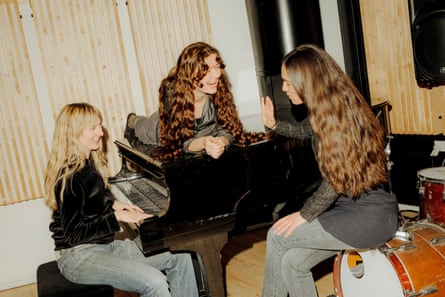
But pop’s upper echelons are starting to take note: Dua Lipa mentioned De Casier on Instagram in 2019, prompting a remix in 2020, while K-pop sensations NewJeans recruited De Casier, Glindvad and Smerz as songwriters on their 2023 EP Get Up (featuring the hit single Super Shy). “Every bone in my body wants to … ahhh!” says De Casier, screaming cartoonishly at the thought of becoming a pop star. She has had a taste of the experience. A few years after her graduation concert she played a show in London. She was standing outside the venue afterwards when an excited fan approached her, starstruck and struggling to believe it was really her. “I was like ‘This is a misunderstanding!’ I’m just me!’” says De Casier. “I liked it. I just was surprised.”
Either way, leftfield music such as theirs doesn’t need validation from the mainstream to be seen as significant. It’s hard to think of another institution in recent memory that has produced so many exciting artists at once: this RMC cohort joins the Rhode Institute School of Design and Mills, Bennington and Black Mountain in the annals of influential academies. Maybe the next generation of experimental breakout stars is at work on their final projects at RMC; maybe not. It depends who’s in your year. “It’s the students who are making this place,” says Sveidahl.

.png) 10 hours ago
5
10 hours ago
5









